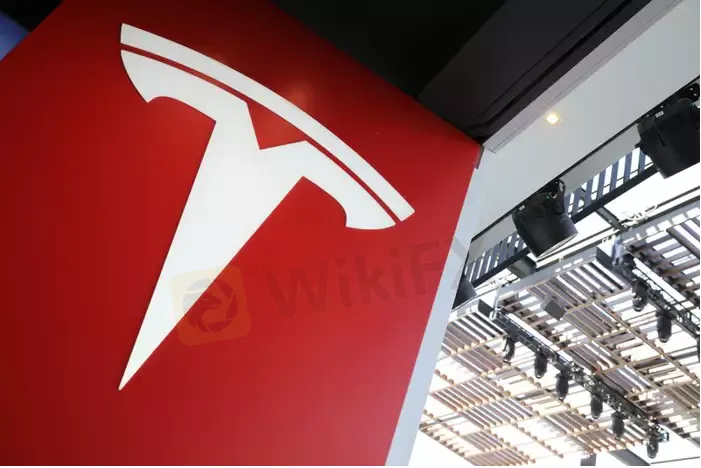简体中文
繁體中文
English
Pусский
日本語
ภาษาไทย
Tiếng Việt
Bahasa Indonesia
Español
हिन्दी
Filippiiniläinen
Français
Deutsch
Português
Türkçe
한국어
العربية
Tesla Inc on Wednesday reported a rise in quarterly profit, as a string of price increases on its be
Abstract:-Tesla Inc on Wednesday reported a smaller-than-expected drop in quarterly profit as a string of price increases on its electric vehicles (EVs) helped offset production challenges caused by COVID-19 lockdowns in China.

Chief Financial Officer Zachary Kirkhorn said Tesla was still pushing to reach 50% growth in deliveries this year, adding that while the target had become more difficult, “it remains possible with strong execution.”
Chief Executive Elon Musk said he expects inflation to start easing by end-2022 and most commodity prices to stabilize.
Tesla does not have a demand problem, but a production problem, Musk told a conference call. He dismissed the idea that global economic problems were hurting interest in Tesla, despite vehicle prices rising to what he called “embarrassing levels.”
The U.S. price of Teslas Model Y long-range version, now $65,990, is up more than 30% since the start of 2021.
Shares of Tesla were up about 1% in after-hours trade. The shares are down about 40% from their peak in November.
Teslas China factory ended the second quarter with a record monthly production level. Musk said new factories in Berlin and Texas aimed to produce 5,000 cars a week by the end of the year, adding that Berlin produced 1,000 cars a week in June.
Musk previously had said the new factories were “gigantic money furnaces” and that he had “a super bad feeling about the economy.”
Morgan Stanley analysts said in a report after Teslas earnings announcement that they see “near-term margin headwinds due to (new) challenges with ramping new production, particularly in Berlin”.
Tesla executives acknowledged some continuing tightness in supplies of older-generation microchips, but said there were no major problems in supplies of chips and batteries barring unforeseen COVID-related shutdowns.
The EV maker posted an adjusted profit of $2.27 per share for the quarter versus analysts consensus estimates of $1.81. This was down from $3.22 in the preceding quarter.
Its automotive gross margin fell to 27.9%, down from a year earlier and the preceding quarter, amid inflationary pressure.
Teslas total revenue fell to $16.93 billion in the second quarter from $18.76 billion a quarter earlier, ending its streak of posting record revenue in recent quarters.
Analysts were expecting revenue of $17.10 billion, according to IBES data from Refinitiv.
Bitcoin to cash
Tesla said it had converted approximately 75% of its bitcoin purchases into fiat currency, which added $936 million of cash to its balance sheet.
Musk said the sale was made to increase liquidity when Tesla was uncertain about how long the COVID lockdown in China would continue. Tesla has not sold any of its holdings of the Dogecoin cryptocurrency.
“This should be not taken as some verdict on bitcoin,” he said, adding that Tesla was open to increasing its cryptocurrency holdings in the future.
Musk had said in May last year that Tesla would not sell its bitcoin.
“The bitcoin losses point out an important part of the Tesla investment case – its eccentric owner. While Musks impressive innovation has served the company well, his personal flair is starting to raise governance questions,” said Laura Hoy, analyst at Hargreaves Lansdown.

Disclaimer:
The views in this article only represent the author's personal views, and do not constitute investment advice on this platform. This platform does not guarantee the accuracy, completeness and timeliness of the information in the article, and will not be liable for any loss caused by the use of or reliance on the information in the article.
Read more

WikiEXPO Dubai 2024 will take place soon!
2 Days Left!

Italian Regulator Warns Against 5 Websites
The Italian regulator, CONSOB has issued a warning against five websites offering unauthorized financial services. This regulatory action aims to protect the public from fraudulent activities.

WikiEXPO Dubai 2024 is coming soon
3 Days Left!

Trader Exposes Unethical Practices by STP Trading
A recent allegation against STP Trading has cast doubt on the firm's business practices, highlighting the potential risks faced by retail traders in an increasingly crowded and competitive market.
WikiFX Broker
Latest News
Hackers Charged for $11M Crypto Theft Using SIM-Swaps
Role of Central Banks in the FX Market
FCA Alerts Against Sydney FX
What Makes Cross-Border Payments Easier Than Ever?
Trader Exposes Unethical Practices by STP Trading
Bitcoin Nears $100,000: A Triumph of Optimism or a Warning Sign?
Malaysian Man Loses RM113,000 in Foreign Currency Investment Scam
Mastercard Partners with JPMorgan for B2B Cross-Border Payments
FCA Identifies Clone Firm Exploiting Admiral Markets' Credibility
Coinbase Under Scrutiny Amid Wrapped Bitcoin Delisting Controversy
Currency Calculator


